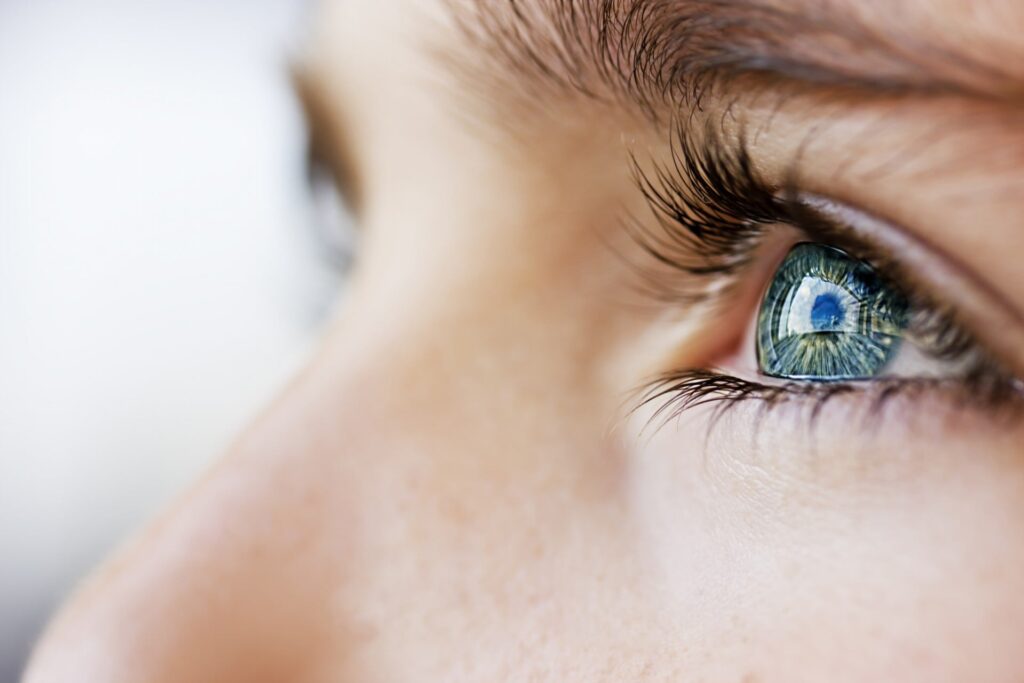
Spring allergy or dry eye syndrome?
The symptoms of seasonal eye allergies, which appear especially during the springtime, are caused by different types of pollen in the atmosphere and, in many individuals, by the reaction of the immune system, which interprets pollen as a potential threat. These symptoms are very similar to those of dry eye, which is among the most widespread eye conditions at this time, affecting up to 30% of the population at some point in their lives. Distinguishing between the two is a key part of determining proper diagnosis and treatment.
Eye allergies
An eye allergy is caused by an allergen in contact with the eye or eyes of a person who is sensitive to that allergen. The contact produces inflammation of the surface of the eye, which may lead to allergic conjunctivitis, vernal keratoconjunctivitis or atopic keratoconjunctivitis. In general terms, symptoms include reddening of the eyes, stinging and intense itching. The condition is becoming more prevalent due to greater general immunogenic susceptibility and increased environmental complexity.
Dry eye syndrome
Tears play a crucial role in eye health as they lubricate and protect eyes. However, some lacrimal glands do not produce enough tears, resulting in a series of symptoms that include stinging, reddening, light sensitivity and blurry vision. This is known as dry eye, and it affects almost 30% of the world’s population. Symptoms are not the only thing these two processes have in common: both are affected by environmental factors.
How environmental factors affect eye allergies and dry eye
Eye allergies and dry eye depend on internal problems and environmental factors. However, the conditions are not caused by the same factors. In the case of dry eye, as indicated by the Miranza specialists, the symptoms worsen in very dry or air-conditioned environments. Eye allergies normally become worse during the spring and outdoors, where one comes into contact with airborne plant and tree pollen.
Differences between symptoms and effects of eye allergies and dry eye
In addition to the environments that make us susceptible to these conditions, there are other differences that allow us to distinguish between an eye allergy and dry eye in order to seek the right treatment. One of these differences has to do with the resulting discomfort, as an eye allergy mainly produces itching, while dry eye results in a burning sensation. Another difference is observed upon closing one’s eyes, as those suffering from dry eye will notice relief, but those suffering from eye allergies will not.
In addition, each condition relates differently to ageing. In the case of eye allergies, there is no relation, as allergic reactions may appear over the course of a lifetime. However, individuals are more likely to suffer dry eye with the passing of time. As far as we know, this is due to changes in the distribution and amount of hormones in the organism. Lastly, it is worth noting that eye allergies are usually accompanied by allergic symptoms elsewhere in the body, such as sneezing or hives. This is not the case with dry eye.
Can I suffer from an eye allergy and dry eye at the same time?
You certainly can. In fact, it is relatively common for the two conditions to occur at the same time, which hampers the process of identification. One of the theories of this co-presentation is the fact that eye allergies, which arise from an immunological disorder, produce ocular hypersensitivity, which makes eyes more susceptible to conditions, such as dry eye. In any case, Miranza specialists are able to detect both conditions when they occur together or separately.
Relationship between allergic conjunctivitis, dry eye and eye allergies
Allergic conjunctivitis and eye allergies are both caused by inflammation of the conjunctiva, which is the transparent membrane covering the white of the eye and the inside of the eyelid, which is caused, in turn, by exposure to an allergen. Both conditions can increase ocular hypersensitivity and heighten eye dryness, which results in the worsening of dry eye symptoms. However, there is also an inverse relationship, in which dry eye may aggravate allergic conjunctivitis and eye allergies, as the lack of tears leads to greater exposure of the eye surface to allergens.
Treatment of eye allergies
Oral antihistamines and antihistamine eye drops are most commonly used to treat eye allergies. Both reduce the production of histamine, which is a substance that the body releases during an allergic reaction and that triggers its typical symptoms. Other treatments used are mast cell stabilisers, which prevent the release of histamine; decongestants; and, in isolated cases, corticosteroids to reduce swelling of the eyes. Logically, all of these treatments are administered once an eye allergy has developed. The most intelligent form of prevention is to avoid exposure to the allergen.

Treatment of dry eye syndrome
The proper treatment of dry eye syndrome depends on the specific person and their circumstances. At Miranza, we have advanced areas in dry eye, equipped with the latest technology, such as the IPL or intense pulsed light, to improve associated symptoms (itching, redness, foreign body sensation, photophobia, excessive blinking, and even blurred vision and pain). This equipment acts directly on the cause of dry eye, reducing inflammation and stimulating the Meibomian glands. Treating the dysfunction of these glands, which are located on the edge of the eyelids and are responsible for good tear quality, is also performed using other technologies from the dry eye areas of the Miranza clinics. This is the case of thermal pulsation (which consists of the local application of heat and “massage” on the eyelids) or Eyelid microexfoliation (which cleans the area in depth).
According to Miranza specialists, it is important for these treatments to be supplemented by routine care and habits, as dry eye is a chronic disease that requires the active involvement of patients to improve the wellbeing of their eyes. Hydrating the eyes with artificial tears and lubricating ointments, taking visual breaks at work, being careful and consistent with eyelid hygiene, and eating a healthy diet (a diet rich in omega 3 is particularly beneficial) are some of the main measures recommended by our team of ophthalmologists who, from the specialist areas of the centres, also offer support and advice to people with dry eye.